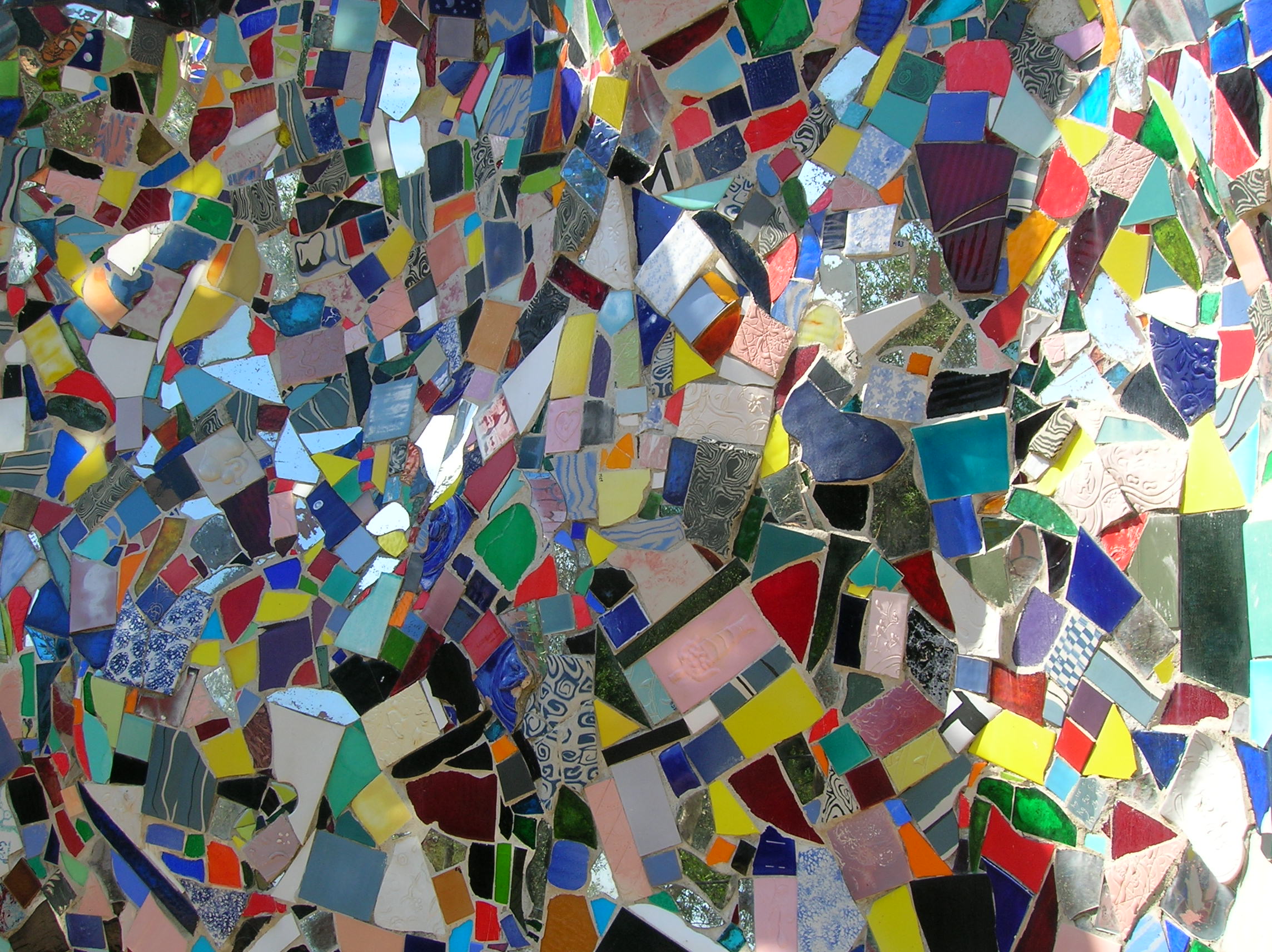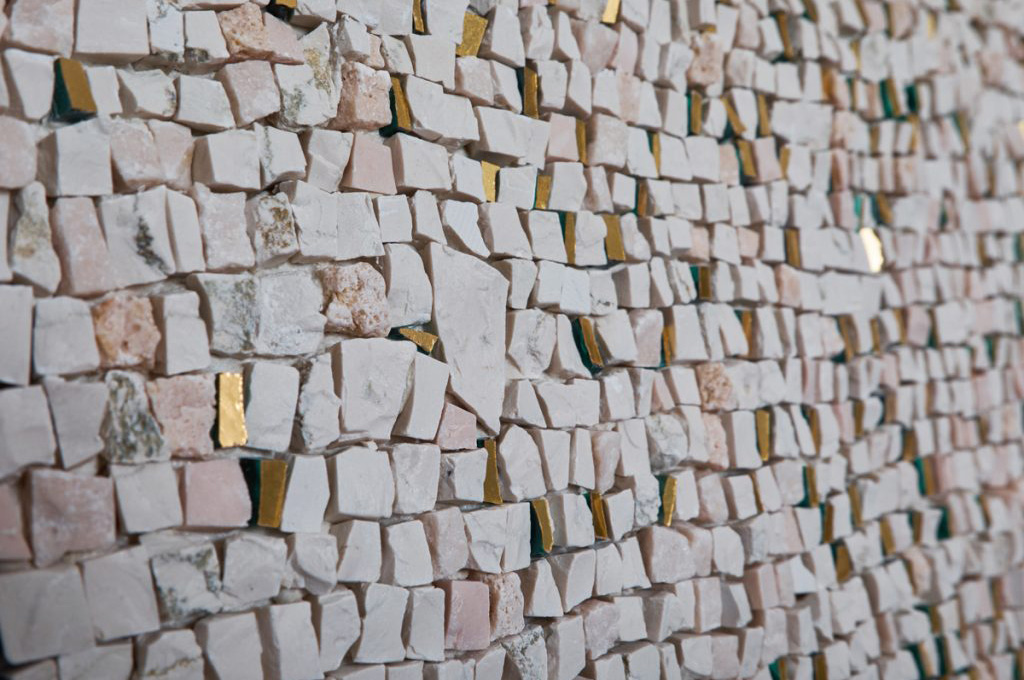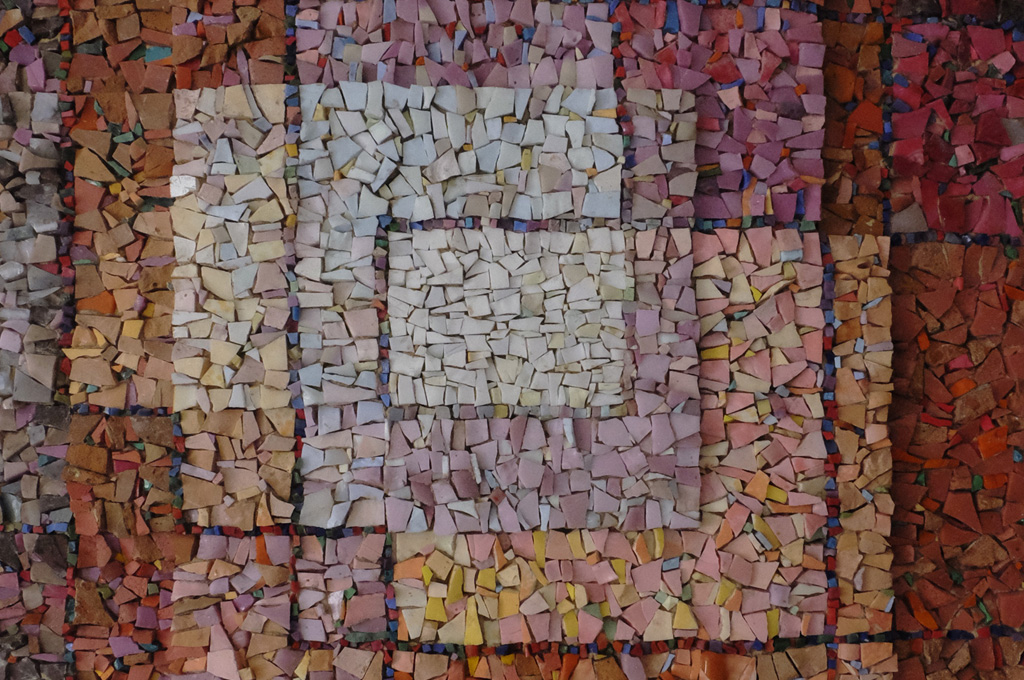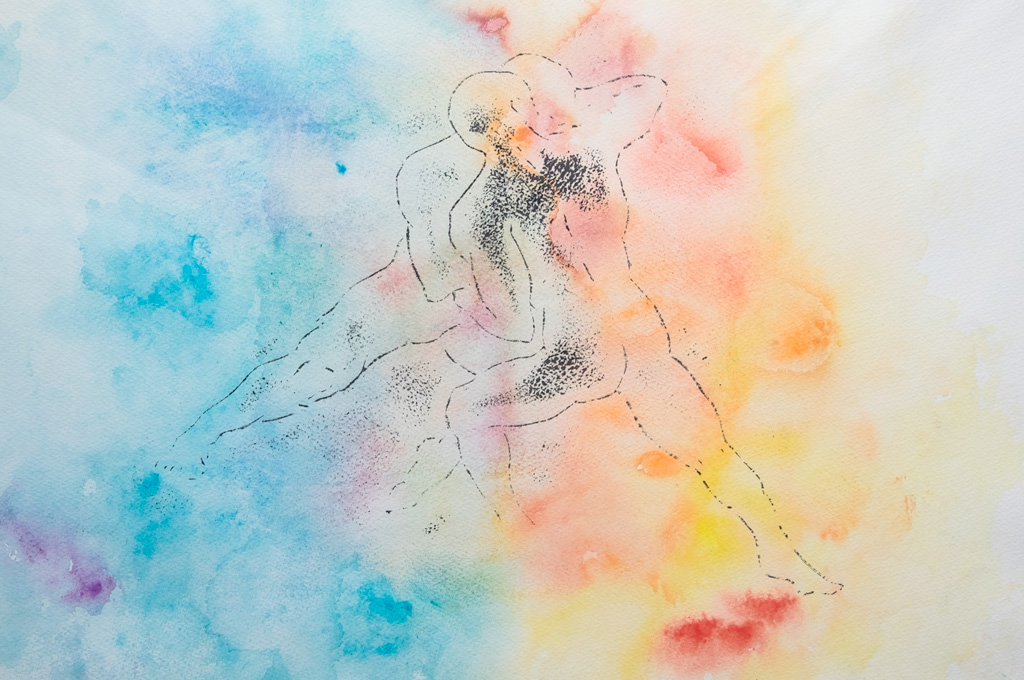From my studio window, I can see my neighbor’s entrance. It is covered with many fragments, randomly arranged, to recompose a surface

This type of coating is called Palladiana and has distant origins (it was already used in ancient Rome). Today, I often hear this technique fall under the “mosaic category”, perhaps because there are pieces of stone, more or less large, juxtaposed. Perhaps because in some way it is possible to reconstruct drawings (I am thinking of the classic compass rose or family initials). Or again because it may have an analogy with the forms of cladding that have so much taken hold in southern Spain with Gaudì. In fact this technique is considered mosaic, but in reality it has its own name which is trencadís. In Italy an example is the “Giardino dei Tarocchi” in Capalbio (Gr).

I think that, for the sake of simplicity, many techniques get close to the world of mosaic. But assembling pieces of colored material (however small pieces) doesn’t necessarily mean this is mosaic. Therefore, we must be careful: we cannot be simplistic or generalist because the risk of confusion is just around the corner. The mosaic has its own rules and can be defined as such when there are tiles possibly cut with a hammer and arranged according to a certain order (andamenti) to compose a design or a surface. Simple and crystal clear.



